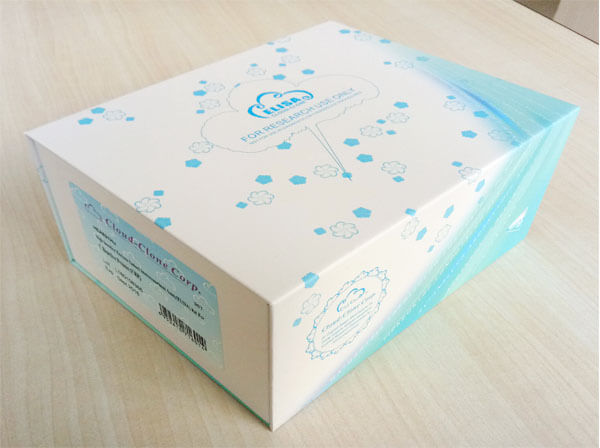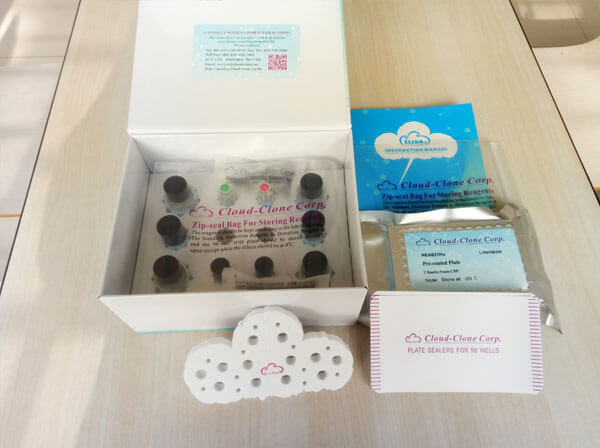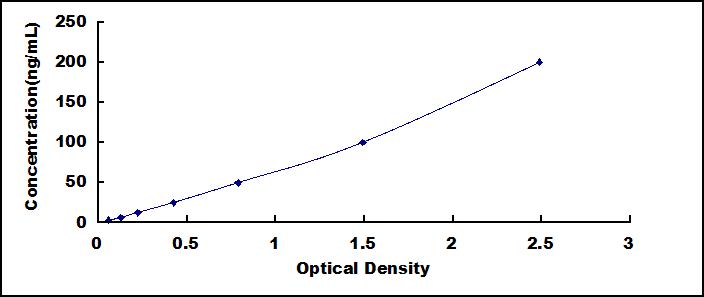ELISA Kit for Anti-Nephrin Antibody (Anti-NPHN) 

NPHS1; CNF; Nephrosis 1; Congenital Finnish Type; Renal glomerulus-specific cell adhesion receptor
- UOM
- FOB US$ 630.00 US$ 900.00 US$ 4,050.00 US$ 7,650.00 US$ 63,000.00
- Quantity
Overview
Properties
- Product No.AEA937Hu
- Organism SpeciesHomo sapiens (Human) Same name, Different species.
- ApplicationsEnzyme-linked immunosorbent assay for Antibody Detection.
Research use only - DownloadInstruction Manual
- CategoryTumor immunityKidney biomarker
Sign into your account
Share a new citation as an author
Upload your experimental result
Review

Contact us
Please fill in the blank.
Recovery
Matrices listed below were spiked with certain level of Anti-Nephrin Antibody (Anti-NPHN) and the recovery rates were calculated by comparing the measured value to the expected amount of Anti-Nephrin Antibody (Anti-NPHN) in samples.
| Matrix | Recovery range (%) | Average(%) |
| serum(n=5) | 95-103 | 99 |
| EDTA plasma(n=5) | 91-101 | 95 |
| heparin plasma(n=5) | 95-104 | 99 |
Precision
Intra-assay Precision (Precision within an assay): 3 samples with low, middle and high level Anti-Nephrin Antibody (Anti-NPHN) were tested 20 times on one plate, respectively.
Inter-assay Precision (Precision between assays): 3 samples with low, middle and high level Anti-Nephrin Antibody (Anti-NPHN) were tested on 3 different plates, 8 replicates in each plate.
CV(%) = SD/meanX100
Intra-Assay: CV<10%
Inter-Assay: CV<12%
Linearity
The linearity of the kit was assayed by testing samples spiked with appropriate concentration of Anti-Nephrin Antibody (Anti-NPHN) and their serial dilutions. The results were demonstrated by the percentage of calculated concentration to the expected.
| Sample | 1:2 | 1:4 | 1:8 | 1:16 |
| serum(n=5) | 90-99% | 86-94% | 82-92% | 80-102% |
| EDTA plasma(n=5) | 89-99% | 95-105% | 85-94% | 78-96% |
| heparin plasma(n=5) | 93-101% | 97-105% | 78-90% | 91-101% |
Stability
The stability of kit is determined by the loss rate of activity. The loss rate of this kit is less than 5% within the expiration date under appropriate storage condition.
To minimize extra influence on the performance, operation procedures and lab conditions, especially room temperature, air humidity, incubator temperature should be strictly controlled. It is also strongly suggested that the whole assay is performed by the same operator from the beginning to the end.
Reagents and materials provided
| Reagents | Quantity | Reagents | Quantity |
| Pre-coated, ready to use 96-well strip plate | 1 | Plate sealer for 96 wells | 4 |
| Standard | 2 | Standard Diluent | 1×20mL |
| Detection Reagent A | 1×120µL | Assay Diluent A | 1×12mL |
| TMB Substrate | 1×9mL | Stop Solution | 1×6mL |
| Wash Buffer (30 × concentrate) | 1×20mL | Instruction manual | 1 |
Assay procedure summary
1. Prepare all reagents, samples and standards;
2. Add 100µL standard or sample to each well. Incubate 1 hours at 37°C;
3. Aspirate and add 100µL prepared Detection Reagent A. Incubate 1 hour at 37°C;
4. Aspirate and wash 5 times;
5. Add 90µL Substrate Solution. Incubate 10-20 minutes at 37°C;
6. Add 50µL Stop Solution. Read at 450nm immediately.

Test principle
The microtiter plate provided in this kit has been pre-coated with an antigen. Standards or samples are then added to the appropriate microtiter plate wells with a Horseradish Peroxidase (HRP)-conjugated secondary antibody. After TMB substrate solution is added, those wells that contain Anti-Nephrin Antibody (Anti-NPHN) will exhibit a change in color. The enzyme-substrate reaction is terminated by the addition of sulphuric acid solution and the color change is measured spectrophotometrically at a wavelength of 450nm ± 10nm. The concentration of Anti-Nephrin Antibody (Anti-NPHN) in the samples is then determined by comparing the O.D. of the samples to the standard curve.
Giveaways
Increment services
Citations
- The Level of Serum and Urinary Nephrin in Normal Pregnancy and Pregnancy with Subsequent Preeclampsia.pubmed:28120572
- Alteration of Connexin43 expression in a rat model of obesity-related glomerulopathy.pubmed:29246788
- Renal protection by atorvastatin in a murine model of sickle cell nephropathyPubmed:29527679
- Multiplex Bead Array Assay of a Panel of Circulating Cytokines and Growth Factors in Patients with Albuminuric and Non-AlbuminuricDiabetic Kidney DiseasePubmed: 32961903
- Urinary Matrix Metalloproteinase-9 and Nephrin in Idiopathic Membranous Nephropathy: A Cross-Sectional Study34707724
- Early biomarkers of nephrotoxicity associated with the use of anti-VEGF drugsPubmed:35620307















